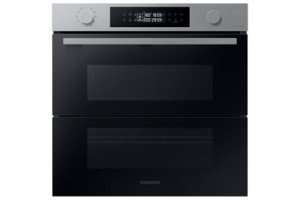The Rise of Integrated Cookers and Hobs: A Comprehensive Guide
In the modern-day kitchen, efficiency, design, and space optimization are crucial considerations for house owners and aiming chefs alike. One of the most considerable patterns in kitchen style is the increasing popularity of integrated cookers and hobs. These appliances not just boost the cooking experience but likewise raise the aesthetics of the kitchen space. This post explores the attributes, advantages, features, and factors to consider surrounding integrated cookers and hobs, providing readers with an in-depth understanding of their advantages.
What Are Integrated Cookers and Hobs?
Integrated cookers and hobs refer to cooking appliances that are built into the kitchen cabinetry, supplying a seamless look and optimizing making use of area. Integrated appliances are created to mix with the visual of the kitchen rather than sticking out like conventional designs.
Types of Integrated Cookers and Hobs
Typically, integrated cooking appliances consist of:
- Integrated Hobs: These are cooktops that fit flush into the kitchen counter top. They can be gas, electric, induction, or a mix of these technologies.
- Integrated Ovens: Built straight into the cabinetry, integrated ovens can come as single, double, or multifunctional designs, offering diverse cooking capabilities.
- Mix Units: Some models combine an oven and hob into a single home appliance, providing a compact solution for smaller cooking areas.
Advantages of Integrated Cookers and Hobs
1. Area Optimization
Integrated cookers and hobs are ideal for little kitchen areas. By embedding Double oven & hobs electric built in cooking appliances into cabinetry, property owners can utilize their kitchen space more efficiently, leaving more space for meal preparation and motion.
2. Aesthetic Appeal
These appliances offer a streamlined and contemporary look to the kitchen. The capability to select finishes and incorporate them into the surrounding cabinets produces a unified design that enhances the total look of the kitchen.
3. Improved Functionality
Integrated cookers and hobs typically include sophisticated innovation features, such as smart controls, timers, and cooking presets, improving user experience and making it possible for effective cooking.
4. Boosted Safety
Numerous integrated hobs feature safety procedures such as child locks and automated shut-off features. This makes them safer than traditional freestanding models, particularly in families with kids.
5. Increased Resale Value
Modern homes with integrated appliances typically bring in greater resale values. Possible purchasers search for streamlined styles and modern conveniences, making integrated cooks and hobs a smart investment.
Functions to Consider When Choosing Integrated Cookers and Hobs
When picking integrated cookers and hobs, numerous functions should be considered:
1. Cooking Technology
- Induction: Provides quick and effective cooking, easy to tidy, and gives accurate temperature level control.
- Gas: Offers traditional cooking benefits with immediate heat but requires adequate ventilation.
- Electric: Provides consistent heat and is offered in different styles.
2. Size and Configuration
- Oven Capacity: Should be enough for the family's cooking requirements.
- Hob Size: Depending on the number of burners/vessels needed for synchronised cooking.
3. Control Mechanisms
- Touch Controls: Provide a smooth appearance and ease of cleansing.
- Knob Controls: Offer tactile feedback and are easy to use.
4. End up and Style
Integrated cookers and hobs been available in numerous surfaces, consisting of stainless-steel, black glass, and even customizable options to match kitchen cabinetry.
5. Energy Efficiency
Opt for energy-efficient designs that can minimize utility costs and lower ecological effect.
Maintenance and Care
To preserve the performance and durability of integrated cookers and hobs, routine upkeep is essential:
- Clean the surfaces: Regularly clean down the hob and oven surfaces to avoid residue accumulation.
- Check seals and gaskets: Ensure that oven seals are undamaged for efficient cooking.
- Service regularly: Schedule professional maintenance to keep the appliances in leading shape.
Frequently asked questions
1. What is the difference between built-in and integrated cookers?
Answer: Built-in cookers are developed to be set up within kitchen cabinets, whereas integrated cookers are produced to flawlessly mix with the cabinets for a more cohesive appearance.
2. Are integrated appliances more pricey?
Answer: Generally, integrated appliances may have a higher upfront cost compared to freestanding systems because of their style and the setup requirements. Nevertheless, they can provide long-lasting savings in energy efficiency.
3. Can I install integrated cookers and hobs myself?
Answer: While some house owners might have the ability to manage the installation themselves, hiring a professional is advised to make sure appropriate fit and function, especially for gas appliances.
4. Are integrated cookers and hobs simpler to clean?
Answer: Integrated hobs generally have less crevices, making them simpler to clean. However, the particular cleaning requirements will depend upon the materials utilized in the device.
5. What should I examine before purchasing?
Response: Check the size of your kitchen space, cooking requirements, energy effectiveness scores, and compatibility with existing cabinetry.
Integrated cookers and hobs are ending up being significantly favored in contemporary kitchens, combining functionality with aesthetic appeal. By understanding their advantages, features, and upkeep requirements, house owners can make educated decisions when choosing the right appliances for their cooking spaces. As trends in kitchen design continue to develop, integrated cooking services will likely remain at the forefront of home innovation, promising both functionality and style.

